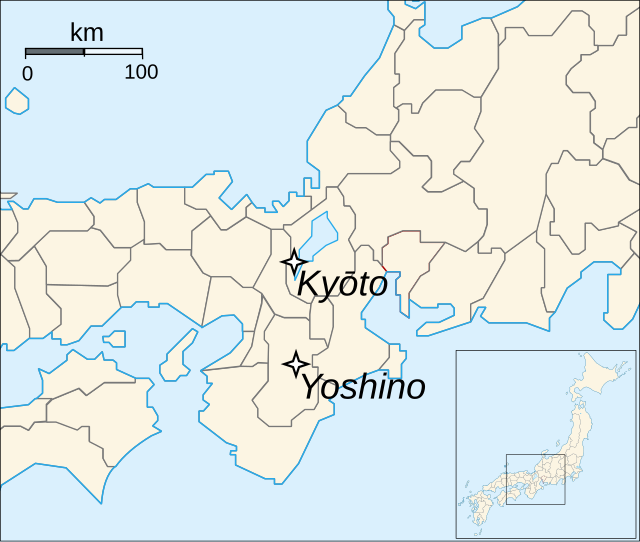Shōkyō
Period of Japanese history (1332–1333) From Wikipedia, the free encyclopedia
Shōkyō (正慶, also pronounced "Shōkei") was a brief initial Japanese era of the Northern Court during the Kamakura period, after Gentoku and before Kenmu, lasting from April 1332 to April 1333.[1] The reigning Emperors were Emperor Go-Daigo in the south and Emperor Kōgon in the north.[2]
Nanboku-chō overview

During the Meiji period, an Imperial decree dated March 3, 1911 established that the legitimate reigning monarchs of this period were the direct descendants of Emperor Go-Daigo through Emperor Go-Murakami, whose Southern Court had been established in exile in Yoshino, near Nara.[3]
Until the end of the Edo period, the militarily superior pretender-Emperors supported by the Ashikaga shogunate had been mistakenly incorporated in Imperial chronologies despite the undisputed fact that the Imperial Regalia were not in their possession.[3]
This illegitimate Northern Court had been established in Kyoto by Ashikaga Takauji.[3]
Change of era
- 1332 Shōkyō gannen (正慶元年): The era name was changed to Shōkyō to mark an event or a number of events. The previous era ended and a new one commenced in Genkō 2, the 10th month.[4]
In this time frame, Genkō (1331–1333) was the Southern Court equivalent nengō.
Events of the Shōkyō era
Notes
References
External links
Wikiwand - on
Seamless Wikipedia browsing. On steroids.